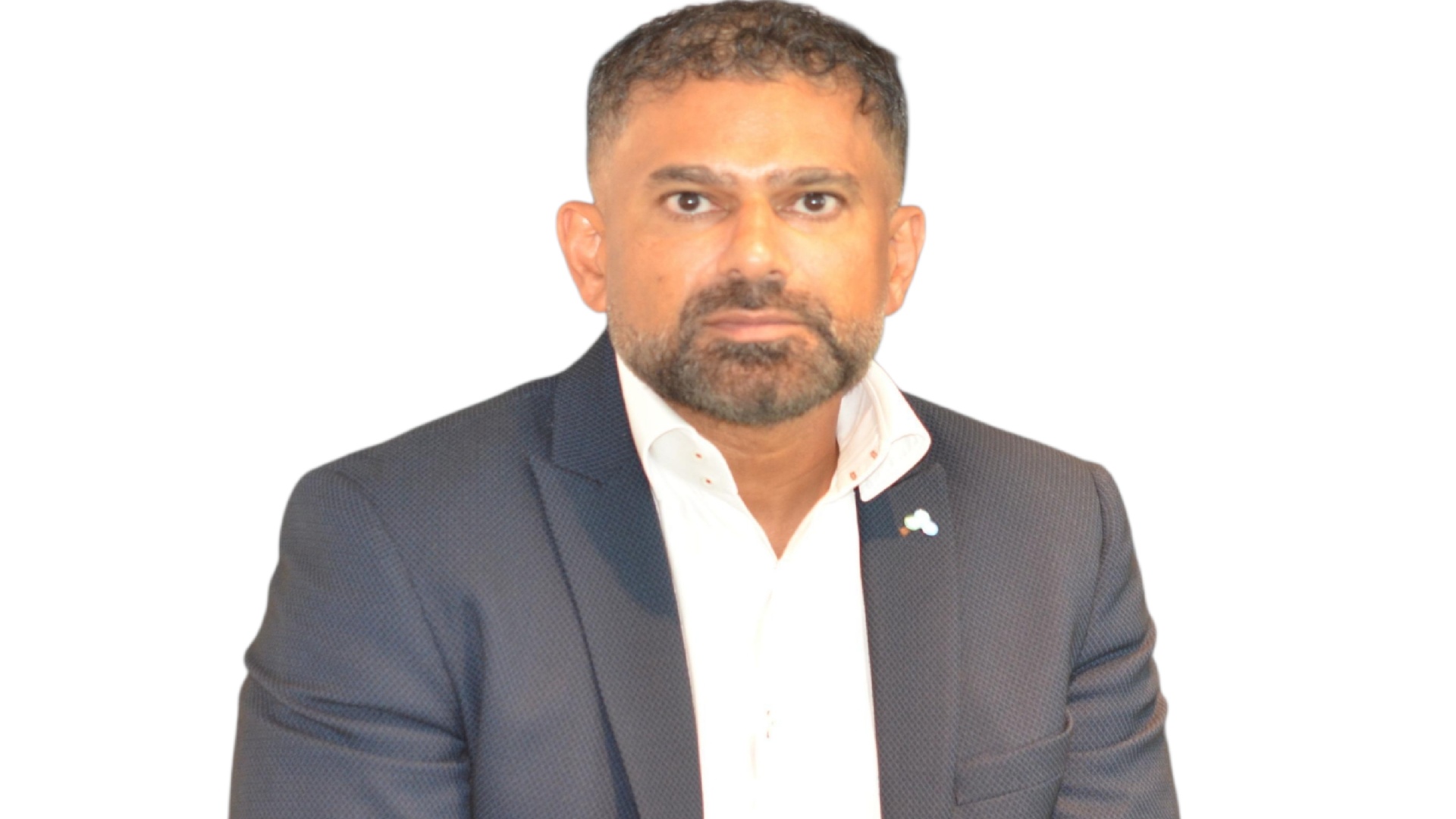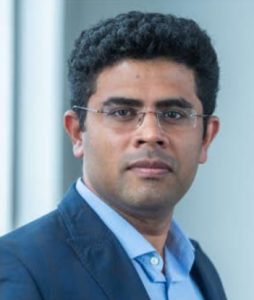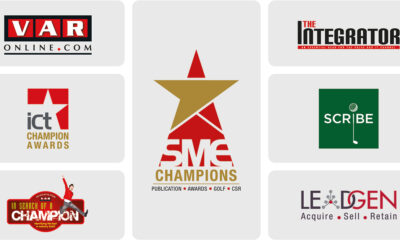Tech Interviews
Commercial Display Market is Evidently Dynamic and Competitive
Sharp NEC is one of the key players that offers display solutions for the B2B markets. The company produces display devices for all industry verticals and they lead in the aviation, oil and gas, and energy and utility sectors. Mr. Adarsh Nair, General Manager, Sharp NEC Display Solutions, MENA speaks to The Integrator on different aspects of the display market and Sharp NEC’s business prospects.
Sharp NEC has a prominent presence in the display market. Speak a little about your signature products and business prospects
Sharp NEC is probably the single manufacturer with the highest breadth of products in visual technology ranging from desktop monitors, projectors ranging from entry-level projectors used in K12 schools to 35,000 lumens projector used for auditoriums and stadiums, digital cinema projectors, large-format displays from 32 inches up to 98 inches, state of the art fine pitch LED products, and outdoor LED displays for OOH and signage applications too.
Compare between MENA and other regions in terms of Sharp NEC’s display solution demands
We have similar market share and demands from all regions including MENA, Europe, North America, and APAC. The business prospects are higher in the US and Europe considering the broad industrial demands and the concentration of several global multinationals in the USA and Europe. Many of these multinationals prefer SHARP NEC through its “ONE-NEC program,” which allows them to have a global agreement for all its installations worldwide which means consistent pricing, efficient global outsourcing, standard commercial terms, and centralized contracts.
Which are the industry verticals (healthcare, automotive, retail, etc.) choose the display products from NEC, and what category of products are highly demanded?
With handling installations in over 200 airports, Sharp NEC has a dominant presence in the aviation sector than any other. Retail is a big market but the increase in supply in this sector has made price dip across the years. NEC has made several key product investments like the low-cost system on chip based on Rpi4 in the retail sector keeping in mind the nature of the market. We expect NEC’s market share to grow substantially in the retail sector in the coming year.
Security and surveillance application in several verticals like oil and gas, telecom, energy, utility and, others have been big business for us. We are seeing a big spike in the use of fine pitch LED in control room applications too. We recently installed the world’s largest LED-based control room in the world for STC in Riyadh.
Speak about the new technology that Sharp NEC wants to concentrate on, and why?
Even though technological advancements take place often in the display industry, the need of the professional B2B display market is to have highly robust, longer-life display products. In terms of the future, you can expect to see more of the 8K panels in B2B installations. SHARP NEC already has the biggest 8K display – 120 inch in the market. We have in our portfolio flexible LEDs (our recent Adidas installation), transparent LEDs, which is something we expect more demand from the retail sector.
Speak about the digital cinema business in the UAE and Sharp NEC’s business prospects in it.
We have nearly 30 percent of the market share in Europe’s digital cinema sector and a decent market share in the MENA market. Roxy cinemas in UAE is one of our recent installations. This is one sector that has been severely affected due to the pandemic.
How about software or application support for Sharp NEC’s display products?
This has always been our focus. We are not just a hardware manufacturer but provide the complete software solution to control all the hardware we provide. Having a single vendor providing a turnkey solution reduces errors in the installation. Control rooms applications are a classic example where SHARP NEC can act as a single vendor to provide the display products and visualization and processing software products needed for a turn-key solution.
Where does Sharp NEC’s hardware production take place?
SHARP NEC is a Japanese company. All R&D takes place in Japan or Germany. Depending on the type of product. Assembly happens in China, Thailand, and Poland.
Any challenges for display or signage business
The COVID19 pandemic threatened the display industry as well. Post-covid effects such as IC shortages and the spike in logistics and transportation costs have affected all display manufacturers including SHARP NEC. This we feel is a temporary phase and our reputation has always kept the business fly high.
Tech Interviews
Unlocking ROI: How Sovereign AI Platforms Accelerate Innovation

Exclusive Interview with Kevin Dallas, Chief Executive Officer, Enterprise DB
You interviewed more than 2000 senior executives across 13 countries about how they are planning for a genetic AI world. Why a genetic AI and why now?
Well, first of all there’s a large economic opportunity around AI. We forecast to be $16 trillion by 2030, and there’s about a trillion dollars that’s going to be spent in the area of AI over the next 12 months alone. So, every enterprise, every nation is investing in AI.
And when we say AI, there’s different types of AI. There’s generative AI, genetic AI, physical AI, and the time is now for that investment. You’re seeing it in the event today where many companies are making investments across the AI spectrum.
What is the data and AI sovereignty, and what happens when enterprises make it a mission-critical part of their strategy?
Well, to be able to actually run these intelligent applications, there is a need for a sovereign data and AI platform from EDB, Enterprise DB, our partners, NVIDIA, RedHat, and Supermicro. And with this new sovereign platform, we hope to deliver our customers the platform that they need to drive rapid innovation around these new AI applications.
Data sovereignty is gaining increased attention globally in the Middle East and the surrounding markets. How is EDB ensuring compliance, trust, and performance in your deployments?
Well, first of all, we’re finding that in this survey, it was very interesting, 95% of respondents are investing in a sovereign data and AI platform over the next three years.
And what they’re seeing is real benefits. They’re seeing two to three extra the velocity in terms of building out AI applications, and they’re seeing a five-fold increase in ROI. So, this is driving a lot of attention around this space.
Now, from an EDB perspective, we are delivering a standard sovereign data and AI platform that accelerates our customers to market. So, it’s a plug and play platform that resolves the security issues, compliance issues, and regulatory challenges that our customers have in a plug and play way.
How important is the UAE or the GCC region for EDB? Can you tell us about your corporate strategy in the GCC and how that aligns with the regional’s national agenda?
Well, what we found is that the biggest investments globally in sovereign data and AI are actually happening here in the region, in the UAE. There is a national vision that’s been set around open and around sovereign data and AI.
So, we’re very aligned in terms of our approach here. And the region, it’s very much like a Silicon Valley of sovereign data and AI, where there’s a lot of rich discussion around new use cases that our partners and our customers want to enable today versus tomorrow. So, it’s here and now in the region.
Looking ahead, six to 12 months from now, what is your message to the enterprises, governments, and other organizations who are considering or already on the AI journey?
I think in the next six to 12 months, focus on building your own sovereign data and AI platform. By doing this, it’s going to have a fivefold increase in your ROI and certainly increase your velocity to market.
But there is also, I think, a misconception. When we talk about sovereign, we talk about the benefit of secure, we talk about the benefit of compliance and regulatory requirements. Meeting those criteria, in some cases, can be viewed as slowing down the rate of innovations.
The opposite is true with our platform. By using a platform that has this capability built in, you’re able to accelerate your time to market.
How does EDB Postgres AI support data sovereignty in practice?
From a sovereign data and AI platform perspective, there are five key criteria that our customers need in the platform. One, open source based. This guarantees interoperability, access to talent, and it avoids vendor lock-in. This is something that even at a national level is important, open source based.
Second, the need to support multiple workloads, transactional, analytics, and AI workloads on one unified platform. Not three, but one. Third, there’s a need for a low-code, no-code application development environment. An environment that accelerates your time to market, an environment that democratizes AI for all.
So, you don’t have to be a developer, you can be a business decision maker and still create applications. Fourth, there needs to be a single pane glass view across the estate so you can monitor, secure, and drive compliance and meet those regulatory requirements across your entire estate. And then last, but by no means least, you need to be able to deploy in a hybrid fashion, meaning it’s not all about running workloads in the cloud.
You need to be able to run workloads on-prem, in the cloud, or in a dedicated system. So Sovereign is really those five things. It’s the ability to deploy in a hybrid manner.
It’s the ability to view your estate through a single pane of glass. It’s the ability to be able to run in a rich and dynamic low-code, no-code app environment, run multiple workloads, and of course, being open source.
Tech Interviews
Regional Enterprises Lead Global Push for Data and AI Sovereignty

Exclusive interview with Kash Rafique, Vice President and GM Middle East and Africa, Enterprise DB
What are your top priorities and what do you want the region to see from EDB that’s new and different at this year’s GITEX?
I think certainly from a messaging point of view, there’s no doubt that sovereignty is the new intelligence on how we move forward in this market. I think what we’re seeing is that our customers are looking for speed, they’re looking for control of their data within their boundaries, and this is making a big difference really to customers and enterprises in the region. I think that’s where we come in as a trusted player, a partner in the region.
What you’re seeing here at the stand today at EDB is really an alignment of that, the immersive experience here we’re giving to our customer to help them understand some of the solutions that we’re able to provide so far as speed is concerned, control of their data within that sovereignty realm is really something that we are showcasing here.
Can you walk us through to the Sovereignty Matters report, which is quite interesting. What are the biggest takeaways for local enterprises?
First of all, I think we should be very proud, of UAE and the Kingdom of Saudi Arabia, because really they’ve come on top of a global report across 13 economies, across 2,000 enterprises, right the way across the globe. I think what is really appealing or revealing from the report is that 17% of organizations in this region are deeply committed to both data and AI, and this is a significant amount. Compare that to what we are seeing globally, which is 13%, or compare it to the UK, which is 10%, this is significantly higher.
It shows real intent and focus on the sovereignty areas, and I think that’s a big thing. The other thing that we see is the 5x return that enterprises are getting from that commitment that they’ve made. I think this is also very, very testimonial on the kind of return that we’re able to see from the sovereign AI solutions that clients are adopting in this region.
And the third one is 2 ½ x are very confident that they will be leading their industries within their respective areas within the next three years. I think this is a fantastic finding. Again, I think the region should be very, very proud of these results.
How is EDB preparing to lead and support its customers through your local office?
So, the local office is there as a hub to support a very important omnichannel of our business here, and that is related to the partners, the alliances, and the ISVs that are regionally based. The office will be used for workshops, training, engineering, and client innovation centers that we’re planning to build as we move through this year.
We certainly looking forward to is building our relationships even further with key partners such as NVIDIA, IBM, Supermicro, Red Hat, and also many of our local partners. We call them our boutique partners, but they’re also equally important. So, from this perspective, it’s a very important base for us.
It provides a hub, it shows investment, and it shows real commitment in the sovereignty space that we’re actively involved with here in the region.
Tech Interviews
AI-POWERED CUSTOMER ENGAGEMENT, CONTEXTUAL MARKETING & MORE

Exclusive interview with Hetarth Patel, Vice President – Growth Markets (MEA, Americas, APAC), WebEngage
What role is AI playing in customer engagement in the region?
AI brings precision to moments that were previously handled with guesstimates. It identifies which customers are exploring something new, which ones are hesitating, and which ones may never return unless they’re nudged at the right time. That improves the experience without making users feel monitored or overwhelmed.
Across verticals, AI helps determine how frequently someone should be contacted, what format resonates with them, and when they’re most open to taking the next step. When communication follows the customer’s rhythm instead of the brand’s, loyalty strengthens naturally.
We are hearing more and more about contextual marketing. How would you define it in today’s Middle Eastern digital economy?
Contextual marketing in the Middle East is about recognising intent as it forms, not after the fact. Consumers in this region move quickly – comparison, consideration, and decision often happen in a single session. So brands need to respond to micro-signals in real time. When a platform can interpret these cues, the experience becomes smoother: relevant suggestions appear naturally, checkout journeys shorten, and customers feel understood without being overwhelmed. For businesses, this reduces wasted impressions and strengthens the quality of engagement. You convert the right people. The result is tighter spending, better retention, and a more predictable path to revenue.
How are customer engagement platforms evolving in the face of AI copilots and automations?
They’re becoming systems that support both momentum and oversight. Marketers in this region want recommendations, not replacements. The AI copilot element helps interpret data faster and flagging sudden behaviour spikes, suggesting audiences worth testing, or predicting where attention is drifting.
At the same time, automation has matured. Journeys can react to dozens of signals without manual input, and campaigns update themselves based on performance. This dual structure works well in markets like Saudi Arabia, where digital maturity is rising sharply. Teams get strategic clarity from the copilot, while automation handles the heavy lifting in the background.
Which technologies are proving most effective in helping GCC brands improve customer experience, ROI, and business outcomes?
The most effective setups are the ones where data moves freely. A Customer Data Platform(CDP) becomes powerful when it ingests live activity, loyalty signals, support tickets, and payment behaviour without friction. CRMs enrich that view with relationship history. Data lakes contribute long-term patterns that sharpen predictions.
What GCC brands are solving today is fragmentation. Teams get a single view of the user and can respond with confidence by connecting these systems cleanly. It also gives them the ability to test smaller ideas quickly instead of betting on broad, expensive campaigns. Better alignment across these tools results in higher ROI because every action is anchored in accurate context.
Across Saudi Arabia and the UAE, what improvements have you seen when brands move to AI-powered customer engagement and automation?
The most noticeable improvement is consistency. Brands no longer depend on campaign calendars to stay relevant, the system keeps the conversation going based on what users actually do. AI also cuts out the “one-size-fits-all” messages that used to frustrate customers across email, push, and in-app channels.
In sectors like airlines, grocery delivery, and financial services, we’ve seen repeat engagement rise simply because journeys adjust themselves. For example, a traveller exploring upgrade options receives timely details about availability rather than a generic newsletter. These small shifts accumulate and create clearer funnels, and a more efficient use of marketing time.
Could you share an example?
A recent example is NICE in Saudi Arabia, a brand with a large offline footprint that wanted deeper digital loyalty. Once their web and app activity were stitched together, the team could finally see how customers moved between browsing, carting, and store visits. That led to rethinking their journeys around intent instead of promotions.
As soon as they shifted to behaviour-led engagement – reactivating dormant shoppers, personalising recommendations, and automating recovery journeys – repeat visits rose sharply and engagement grew 148%. The improvement came from recognising micro-signals and responding early.
What is WebEngage’s long-term vision for the Middle East as brands shift from acquisition-heavy models to retention-driven growth?
Our long-term vision is to make retention operationally simple and strategically central. GCC businesses view retention as the engine that stabilises revenue. We’re building toward a future where engagement, loyalty, data governance, and service workflows sit within one connected layer.
This will allow brands to identify intent across channels, respond instantly, and measure outcomes with much greater accuracy. The goal is to help enterprises move from “sending messages” to designing relationships that last a lifetime.
How have you adapted in the face of these advancements?
Our competitive edge comes from how we operate, not what we claim. Scale, market rankings, and platform breadth matter, but they’re outcomes and not differentiators. What truly moves the needle for our customers in the Middle East is the way we build with flexible data architecture, a composable CDP that adapts to their systems rather than forcing a migration, and activation tools that work reliably at enterprise scale.
We’ve grown by treating engagement as an engineering problem rather than a marketing challenge. That mindset is what helps us scale. The idea is to make sure our fundamentals are strong enough to create the next set of milestones.
With regulations like PDPL and sector-specific frameworks in place, how essential is consent management for brands operating in the Middle East?
Consent management has become a structural requirement, especially as more industries digitise service delivery. It’s no longer about obtaining a checkbox, it’s about ensuring that user preferences flow across every system the brand uses – marketing, support, loyalty, and analytics.
In regulated categories, inconsistent consent handling can invalidate entire engagement programs. We address this by integrating with specialised consent tools so preferences update instantly across channels. Customers notice when brands respect these boundaries, and that strengthens long-term relationships.
What differentiates WebEngage in this region, and where do you see opportunities?
What sets us apart is our ability to adapt deeply to each organisation’s structure, whether it’s a fast-scaling marketplace or a highly regulated enterprise. The platform integrates into complex ecosystems without forcing data to move in unnatural ways.
Where we continue to evolve is governance, onboarding speed, and advanced modelling. The need for more precise controls and predictive capabilities increases as sectors like telecom, aviation, and financial services expand their digital footprints . We’re building tools that help teams act faster while meeting regulatory expectations with confidence.
What advancements can we expect from WebEngage in the next 12 months?
We’re now building on top of the foundations that already work well for our customers. The next phase is about reducing the effort needed to go from insight to action. After launching Insights CoPilot, we’re extending the ecosystem with Segmentation and Campaign CoPilot, and Governance CoPilot will follow. Each one is designed to shorten the path from understanding behaviour to acting on it with confidence.
In parallel, we’re deepening our machine-learning models so the system can recognise subtle behavioural shifts and adjust journeys with more nuance. The aim is to let the platform handle the operational complexity quietly in the background, while marketers focus on strategy, creativity, and the larger customer experience.
-

 Tech News1 year ago
Tech News1 year agoDenodo Bolsters Executive Team by Hiring Christophe Culine as its Chief Revenue Officer
-

 VAR9 months ago
VAR9 months agoMicrosoft Launches New Surface Copilot+ PCs for Business
-

 Tech Interviews2 years ago
Tech Interviews2 years agoNavigating the Cybersecurity Landscape in Hybrid Work Environments
-

 Tech News6 months ago
Tech News6 months agoNothing Launches flagship Nothing Phone (3) and Headphone (1) in theme with the Iconic Museum of the Future in Dubai
-

 Tech News2 years ago
Tech News2 years agoBrighton College Abu Dhabi and Brighton College Al Ain Donate 954 IT Devices in Support of ‘Donate Your Own Device’ Campaign
-

 VAR1 year ago
VAR1 year agoSamsung Galaxy Z Fold6 vs Google Pixel 9 Pro Fold: Clash Of The Folding Phenoms
-

 Editorial1 year ago
Editorial1 year agoCelebrating UAE National Day: A Legacy of Leadership and Technological Innovation
-

 Tech Features11 months ago
Tech Features11 months ago5 Urgent Questions About Healthcare Network Cybersecurity in the Middle East















